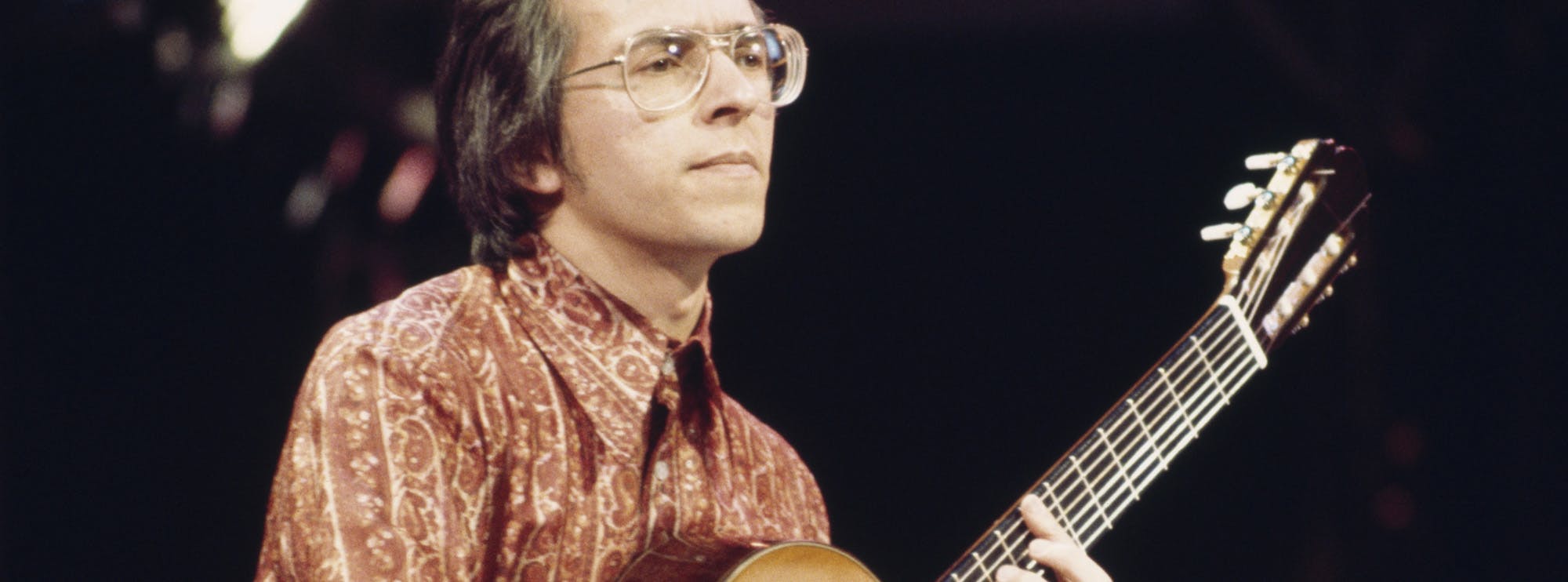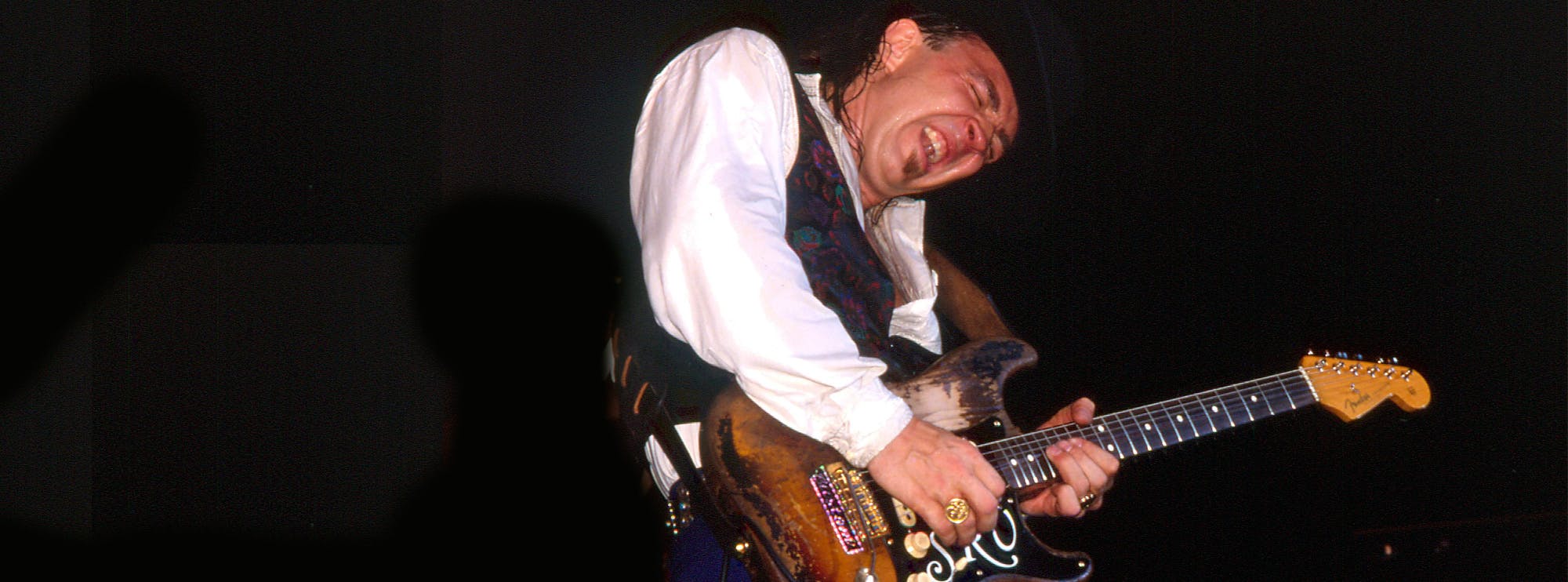Moving Pictures by Rush: A Guitarist's Perspective
"Moving Pictures," released in 1981, is the eighth studio album by Canadian progressive rock band Rush. It features some of the band's most iconic songs, including "Tom Sawyer," "YYZ," and "Limelight." This album showcases the incredible guitar work of lead guitarist Alex Lifeson, whose playing is characterised by his unique blend of melody, harmony, and technical prowess.
In this guitar lesson course, LickLibrary tutor Sam Bell steps into the shoes of guitar hero Alex Lifeson as he walks you through the many highlights of each song from the Canadian music icons one phrase at a time.In this in-depth analysis, we will explore each song on the album, focusing on guitar scales, solos, and techniques. Additionally, we will discuss Lifeson's contribution to the album and the innovative techniques he employed throughout.
Tom Sawyer
"Tom Sawyer" is one of the most recognizable songs on the album, featuring an unforgettable synthesizer riff and an equally memorable guitar riff. The song is played in the key of E major and starts with a driving power chord riff, followed by an arpeggiated chord progression that showcases Lifeson's skilful use of arpeggios and syncopated rhythms. The solo section, played in B natural minor, features alternate picking, string bending, and vibrato.
Red Barchetta
"Red Barchetta" is a dynamic and melodic track in A major. The intro features intricate finger-picking patterns, and the verse employs arpeggiated chords and syncopated rhythms. The solo section showcases Lifeson's ability to create tension and release with slides, hammer-ons, pull-offs, and double stops.
YYZ
"YYZ" is an instrumental track in D minor, named after the airport code for Toronto Pearson International Airport. This song features complex time signatures, such as 10/8 and 4/4, and showcases Lifeson's intricate playing, blending alternate picking, tapped harmonics, and legato techniques. The solo section highlights his use of octave melodies, string bending, and pinched harmonics.
Limelight
"Limelight" is another classic Rush track in E major, featuring a catchy riff and powerful chord progressions. The song utilizes power chords, palm-muted riffs, and arpeggiated chord progressions in the verses. The solo showcases Lifeson's ability to create melodic solos using slides, string bending, and vibrato.
The Camera Eye
"The Camera Eye" is a 10-minute progressive rock epic in the key of D major. The song features various guitar techniques, including finger-picking, alternate picking, sweep picking, and hybrid picking. The solo section focuses on melodic phrasing, incorporating slides, hammer-ons, and trills.
Witch Hunt
"Witch Hunt" is a dark, atmospheric track in A minor that features haunting guitar lines and eerie soundscapes. The guitar work in this song consists of arpeggiated chords, palm-muted riffs, and open-string riffs. The solo section is characterized by the use of pinched harmonics, string bending, and vibrato.
Vital Signs
"Vital Signs" is a reggae-influenced track in E minor that demonstrates Lifeson's versatility as a guitarist. The song features syncopated rhythms, chord progressions, and rakes. The solo section combines hammer-ons, pull-offs, double stops, and string bending to create a unique and memorable sound.
Alex Lifeson's Contribution to Moving Pictures
Alex Lifeson, as the lead guitarist of Rush, played a significant role in shaping the sound of "Moving Pictures." His inventive use of various guitar techniques, combined with his melodic and harmonic sensibilities, resulted in an album that is revered by guitarists worldwide. Throughout the album, Lifeson's guitar work is marked by a strong sense of melody, inventive chord voicings, and an unwavering focus on serving the song.
In conclusion, "Moving Pictures" by Rush is a masterpiece that showcases Alex Lifeson's immense talent as a guitarist. The album features a diverse range of songs, each highlighting different guitar techniques, scales, and soloing approaches. As such, "Moving Pictures" remains a favorite among guitarists who appreciate Lifeson's innovative playing and the album's enduring influence on the world of progressive rock.
Guitar techniques useed on Moving Pictures
Throughout "Moving Pictures," Alex Lifeson employed a wide range of guitar techniques that contributed to the album's unique sound. Some of the techniques used include:
- Vibrato
- Alternate Picking
- Legato
- Tapped Harmonics
- String Bending
- Arpeggios
- Syncopated Rhythms
- Finger-picking
- Hybrid Picking
- Slides
- Hammer-ons
- Pull-offs
- Double Stops
- Palm Muting
- Pinched Harmonics
- Trills
- Sweep Picking
- Rakes
- Chord Progressions
- Arpeggiated Chord Progressions
- Open-string Riffs
Click on a link for more detailed info about a technique.

About The Tutor
Tutor Profile
Sam Bell
Sam Bell has been playing guitar from the age of 4, since then he has played many styles from Funky Blues to screaming Metal/Fusion on 8 string guitar. A member of UK tech metal band ‘Mask of Judas’, he is also currently writing his own solo instrumental album. He also...




